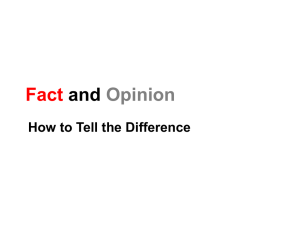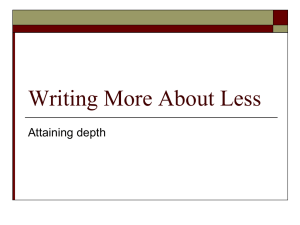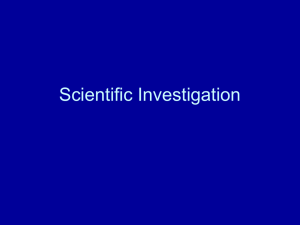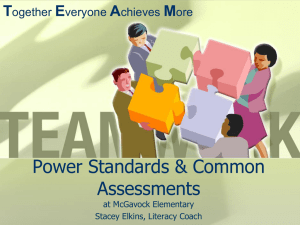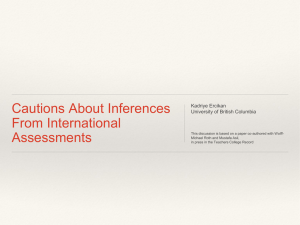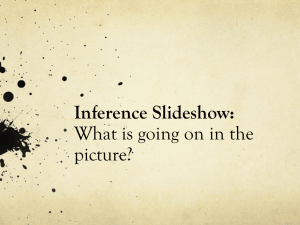PowerPoint 10-3-14
advertisement
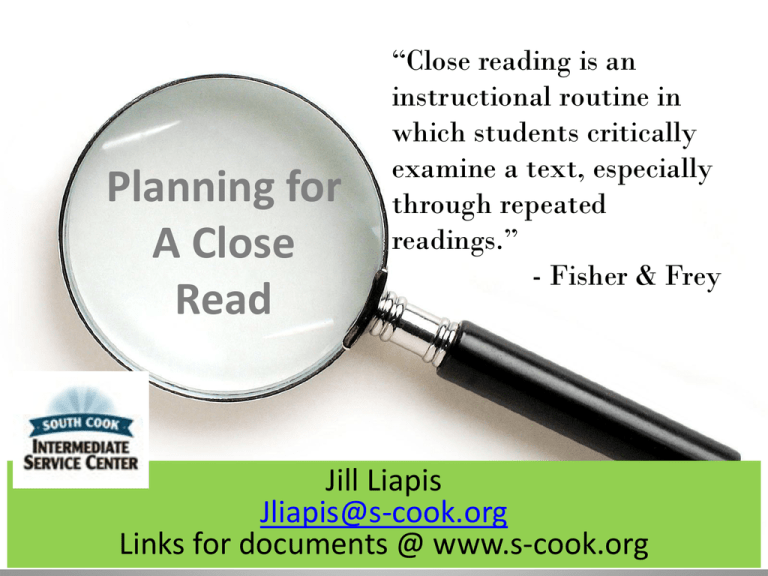
Planning for A Close Read “Close reading is an instructional routine in which students critically examine a text, especially through repeated readings.” - Fisher & Frey Jill Liapis Jliapis@s-cook.org Links for documents @ www.s-cook.org Planning for a Close Read Use a short passage or excerpt “Read with a pencil” Note what is confusing Pay attention to patterns Give your students the chance to struggle a bit knowing that you will scaffold support throughout the routine Text Complexity Text complexity is defined by: Qualitative measures – levels of meaning, structure, language conventionality and clarity, and knowledge demands often best measured by an attentive human reader. Quantitative measures – readability and other scores of text complexity often best measured by computer software. Reader and Task considerations – background knowledge of reader, motivation, interests, and complexity generated by tasks assigned often best made by educators employing their professional judgment. http://youtu.be/Q0uZwDP6cGo CCSS, Appendix A Text-Dependent Questions “Rigorous, text-dependent questions require students to demonstrate that they can follow the details of what is explicitly stated and make valid claims and inferences that square with the evidence in the text.” PARCC Model Content Frameworks, 2011 Discussion An active, constructive, and social process for learning “In the last 25 years or so, research has provided significant evidence that collaborative academic talk is at the heart of the learning experience.” Carmen SimichDudgeon, 1998 “Talk , like reading and writing, is a major motor—I could even say THE major motor– of intellectual development.” Lucy Calkins, 2001 The Lesson Plan Format Opinions, Arguments & Intertextual Connections Inferences Purpose Vocabulary & Text Structure Key Details General Understanding Routines General Understandings Key Details Vocabulary & Text Structure Inferences Purpose Opinions, Arguments & Intertextual Connections Establish Purpose 1st Reading & 1st Discussion 2nd Reading & 2nd Discussion 3rd Reading & Potential Prose Constructed Response Establish Purpose • Explain the purpose of the read • Students need to know prior to reading that this is an opportunity for a Close Read 1st Reading • Students read independently • Students annotate text • Teacher observes students’ annotations and looks for patterns 1st Discussion • Turn & Talk to Check Meaning • Encourage Students’ to reference text annotations during discussion • Get the gist of the text • Focus on the author’s main claim General Understanding General Understanding • What is the same about the front and back of the penny? General Understanding • Why would unsweetened chocolate be changed? General Understanding • What are the dangers of an avalanche? • Focus on important details • Often who, what, where, when, why or how Key Details Key Details Why do we honor Abraham Lincoln? Key Details • What ingredients make the three types of chocolate? Key Details • What 2 ways can avalanches occur? Which is the most dangerous and why? 2nd Reading • Teacher reads aloud the text • Students listen • Students continue to annotate 2nd Reading “Because challenging texts do not give up their meanings easily, it is essential that readers re-read such texts.” Tim Shanahan, 2013 “The close = re-read + worthy assumption here is critical: we assume that a rich text simply cannot be understood and appreciated by a single read, no matter how skilled and motivated the reader.” Grant Wiggin, 2013 http://grantwiggins.wordpress.com 2nd Discussion • Students’ revisit table talk • Students’ share and participate in whole class discussion • Consider how the reading is organized • Vocab includes denotations (definitions) & connotations (ideas or feelings evoked) • Why the author chose the word… Vocabulary & Text Structure Vocabulary & Text Structure How does the author let you know the meaning of the word carved? Vocabulary & Text Structure • How does the author help you understand the meaning of vary in the 2nd paragraph? Vocabulary & Text Structure • What is the meaning of the word faces as used in paragraph 6? • Inform, entertain, persuade or explain something • Allows the reader to follow the flow of the reading Purpose Purpose What is the author’s purpose of writing this text? Purpose • Why did the author write this article? • AKA – What is the author’s purpose of writing this article? Purpose What is the authors intended purpose for writing this text? How do you know that this is the purpose. Use evidence to support your answer. • Require reading of the whole selection • Consider where the text is going • Reconsider key points as contributing to the whole Inferences Inferences Why is the author telling us about the penny, memorial and Mount Rushmore? Inferences • Why do purists not consider white chocolate a chocolate? Inferences • How does the author informing you of the types of avalanches help you understand the dangers of an avalanche? 3rd Reading • Teacher Led Reading with Text Dependent Questions • Opportunity for a Prose Constructed Response Opinions, Arguments & Intertextual Connections • Used sparingly • Used after multiple reads and opportunities to expand understanding Opinions, Arguments & Intertextual Connections Why or why not??? Should Abraham Lincoln be on the penny? Support you answer with evidence. Opinions, Arguments & Intertextual Connections • Are purists right with believing that white chocolate is not chocolate? Opinions, Arguments & Intertextual Connections • OPINIONS, ARGUMENTS, INTERTEXTUAL CONNECTIONS • How would this article impact your desire to participate in snow sports? Use evidence from the text to support your answer. Questions
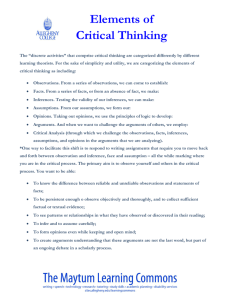
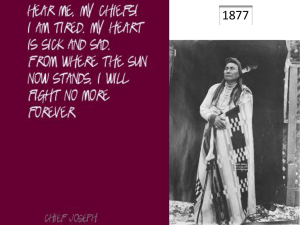
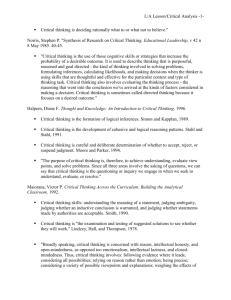
![Title of the Presentation Line 1 [36pt Calibri bold blue] Title of the](http://s2.studylib.net/store/data/005409852_1-2c69abc1cad256ea71f53622460b4508-300x300.png)
